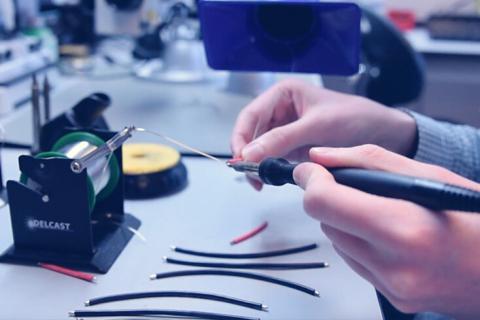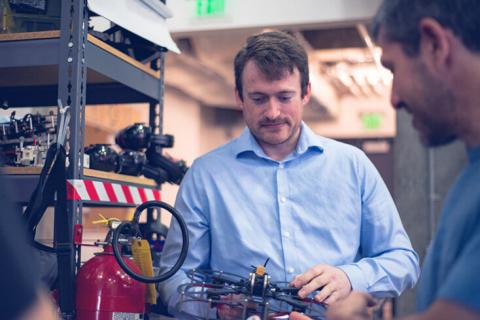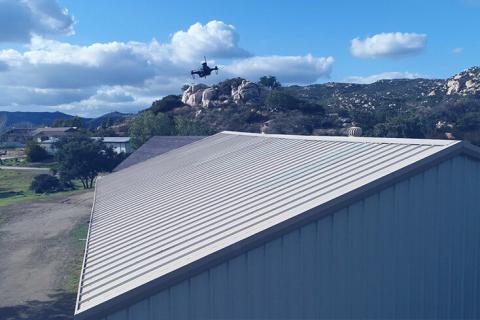[August 27, 2019]
Inside Hardware: Thermal System Design

Why do we design thermal systems?
Often, when electronics are used they are not 100% efficient. Inefficiency translates to a non-trivial amount of energy released as heat. Thermal systems are often required to properly manage that heat.
Why is it important?
Without thermal management, eventually an engineered system won’t work anymore; it will overheat. This can manifest in several ways. The temperature of a component within the system may exceed an allowable operating temperature and fail to function properly. Alternatively, an external component becomes so hot that it cannot safely be touched by the user.
At Shield AI, we spend a lot of time and consideration thinking about thermals and designing our system to ensure functionality across a wide range of ambient temperatures. We architect our product around thermal solutions. By approaching thermal design in this way, we can find a holistically optimal solution for thermal while also integrating it well into the entirety of the system that we’re building.
What is the design process for thermal systems?
It’s a lot of hand calculations, computational modeling and simulation. We use Computational Fluid Dynamics or CFD and couple that with thermal modeling. It is an iterative process to achieve an optimal result. Ultimately, it takes a lot of work but it’s really rewarding to see the whole solution come together.
What are some of the challenges of thermal design?
Thermals can be particularly challenging on something that flies because you need to consider a different set of design constraints. Our aerial robot is equipped with a powerful computer, but unlike a laptop which is optimized for minimizing noise and volume, we seek mass-optimized thermal solutions. For instance, while a thermal solution for a laptop may be to use copper because it of its very high thermal conductivity, we cannot rely on copper in our thermal design because it is a very heavy material.
We also need our product to be environmentally sealed and waterproof. It would be easy to just blow air into the system to circulate the heat out, but if we did that, moisture and dust would be introduced to the inside of the system along with the air. These environmental particles could damage the system and cause it to fail prematurely.
What about thermal design or hardware engineering generally is different at Shield AI?
At Shield AI, we use the same math and methodology as all the best engineers. The fundamentals of engineering remain the same. The difference in our hardware design arises because the requirements for the products that we’re designing are significantly different from a consumer product.
We are designing for first responders and service members, and these customers have different requirements than traditional consumers. They are more rigorous. They have higher needs for the utmost in quality and durability. And so, we have much higher quality materials capable of matching this need for the highest performance levels.
You see a lot of that differentiation in the types of sensors we’re using and the compute solutions that we make available. The components we use are higher quality and more powerful. That means that there’s a lot more that our product can do.









